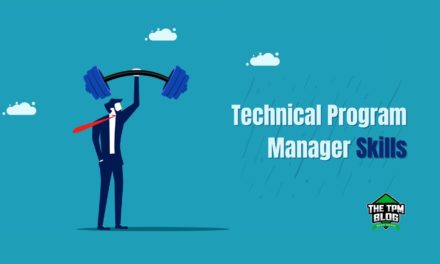Practical strategies for Technical Program Managers and tech leaders to overcome stagnation, avoid burnout, and reignite career momentum.
You’ll spend nearly a third of your life at work. Take a moment to think about that. You will spend more time with colleagues than with your own family. And once you factor in sleep, errands, and daily routines, the time left for meaning and reflection is limited. The pandemic forced many of us to hit pause and take stock. For me, it drove home the fact that time, not money is my most limited resource. That shift in perspective changed how I think about career, fulfillment, and what I’ll look back on at in my 50s, 60s, or 70s.
“Time is the coin of your life. It is the only coin you have, and only you can determine how it will be spent.” – Carl Sandburg
If you’re feeling stuck, like you’re running in place while others move ahead – I have been there. If you’ve worked long enough, you will get there at some point. This post distills the conversations I’ve had with friends and peers in engineering leadership who are quietly wrestling with the same question: What’s next? This is my advice. I hope it helps you or someone you know.
Key Mindsets to Reframe
-
Your career is not your identity.
Our worth often gets tied to a job title or company name. This is especially true in tech-centric cities and FAANG/MMAANG companies. However, titles say little about who you are, what drives you, or what makes you whole. Titles do not mean the same scope/pay at different companies and are not necessarily an indication of success or wealth.
-
Work is an exchange, not your purpose.
You trade time for money and stability. That doesn’t mean your job has to fulfill every need. Your time at work could fulfill your curiosity, be your way to contribute to society or simply a means to gain financial freedom to invest in areas that deeply matter to you. Check out my podcast with a Google leader on achieving financial independence with your tech job.
-
Your job doesn’t need to be your passion.
Expecting work to be everything sets you up for disappointment. Just like one person can’t meet all your needs in life, neither can one job. It just needs to be enough. This will mean something different for each individual.
-
You are replaceable at work.
No matter how respected or loved you are, you will be replaced. That’s not cynicism, it’s simply organizational design. Organizations are built for continuity. Don’t let that define your self-worth and don’t let it give you a sense of misguided loyalty.
-
You are enough — without the title.
Detach your confidence from your resume or a company brand. Your path is your own, and no one else’s advice (even from people who care deeply) will fit perfectly.
Diagnosing the Rut
Before you take action, you need clarity. Try the 5 Whys method to dig beneath surface frustrations. Go for a distraction-free walk and reflect.
Ask yourself:
-
Is it a toxic environment or person?
Why does it affect you? Is there truly no way out?
-
Is it your manager?
Is there a trust issue, misaligned expectations, or poor communication?
-
Is it a lack of growth?
Is your full potential being tapped? Are there small wins you’re overlooking?
-
Is it misaligned pay or effort?
Are your assumptions verified? Have you discussed it with your manager or HR?
-
Are you in the wrong role for your skills?
Is the mismatch due to level, pace, or scope? Read my blog on Day in the life of a TPM to gain clarity or check out the TPM 101 course to self-evaluate.
-
Is it burnout?
Has the spark faded? Do you feel more bitter than curious? Check out my podcast with an Amazon leader on Burnout.
-
Is it disillusionment?
Have your life priorities changed? Does your job no longer align with your life priorities?
-
Is it a sense of completion?
Have you achieved what you set out to do and now want to rebalance?
Breaking the Stagnation
-
Move to create momentum.
You are not a tree. Change roles, companies, or even locations if you need to. These are all actual choices, each with its own tradeoffs. Understand the TPM levels, career options and evaluate where you are versus where you want to be. Check out TPM 101 to baseline your fundamentals and TPM levels with associated skill sets.
-
Don’t fear starting over.
A new role/ job/company builds on your experience. If they make you an offer, they feel you are good enough for the role. You were hired for a reason even in your current company. Trust yourself and believe that you can overcome any learning curve.
-
Lean into discomfort.
Growth will always feel unfamiliar. If you’re uncomfortable, you’re learning.
-
Evaluate golden handcuffs.
High pay and RSUs are real, but so is stagnation. Decide what matters more. Work toward financial independence to expand your choices and recognize any constraints (like visa situations) as guiding factors, not deal-breakers.
-
Be intentional today.
Focus on skill-building and small wins. Even a lateral move or reduced scope can bring balance if ambition isn’t your leading driver.
-
Run toward something, not away from something.
This is advice I have given many of my mentees who want to jump ship to break this feeling at once. Don’t rush into it. Define what you want before making a change, so you’re moving with purpose.
Final Thoughts
You can’t control the pace of promotions or the culture of your company, but you can control your choices, how you invest your time and energy. Even small, intentional steps like developing a new skill, having a tough conversation, or tuning in to your shift in priorities can break the inertia of a career rut. The real question isn’t whether you’re stuck. It’s: How will you choose to invest your time starting today?
“The key is in not spending time, but in investing it.” – Stephen R. Covey
Frequently Asked Questions
Q1. How do I know if I’m in a career rut as a Technical Program Manager (TPM)?
You may be in a rut if you feel stagnant despite delivering results, no longer find your work engaging, or notice your growth opportunities shrinking. Burnout, disillusionment, or a constant sense of “running in place” are also common signs.
Q2. What are signs of burnout for tech leaders?
Signs include feeling drained by tasks you once enjoyed, irritability with peers, lack of motivation, and a sense that your work no longer sparks curiosity or purpose.
Q3. How can TPMs find career growth without a promotion?
Growth isn’t always tied to title changes. TPMs can expand scope, build new skills, take lateral moves into challenging projects, or mentor peers. These often create momentum and open doors to future opportunities.
Q4. What should I do if compensation doesn’t match my effort?
First, validate your assumptions by researching pay benchmarks and discussing with trusted peers. Then have a transparent conversation with your manager or HR. If the gap persists, explore whether a role or company change might bring better alignment.
Q5. Are career ruts common in tech leadership?
Yes. Many mid-career tech leaders experience plateaus, especially after reaching stability in compensation and title. The key is to recognize it early and take intentional steps to regain momentum before disengagement sets in.
Q6. How do I overcome the “golden handcuffs” of a tech job?
Evaluate what you value more: stability or change. Consider building financial independence to create flexibility. Sometimes a lateral move or smaller scope can restore balance without giving up compensation entirely.
Ready to level up your TPM Career?
Unlock your potential as a TPM—master the fundamentals, navigate career levels, and excel in your role.
Author

Preetha Annamalai
Preetha Annamalai is an ex-Amazon Senior Manager who has led cross-functional software, TPM, and product teams. She has 18+ years of experience driving strategic initiatives and fostering innovation. Preetha excels at building high-performance teams and guiding professionals to reach their full potential.



















